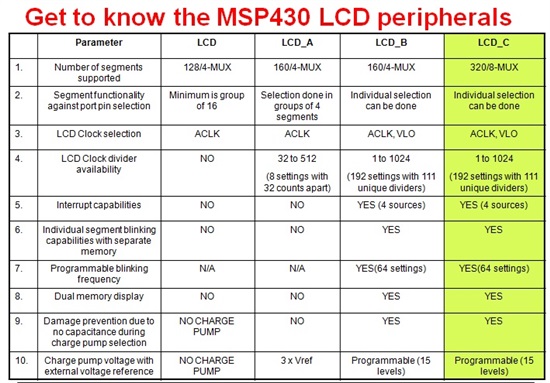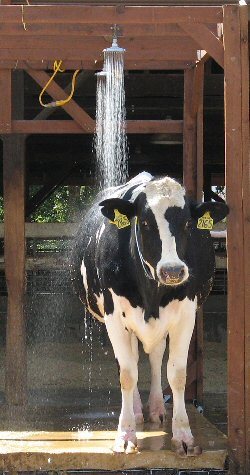The Innovation Premier League – 2013!
C.P. Ravikumar, Texas Instruments
"Welcome to IPL 2013!" I announced, as the host of the inaugural ceremony of the first TI India Educators’ Conference (TIIEC 2013). The venue was the NIMHANS Convention Center, Bangalore. The date was April 4 - the first day of the two-day conference. More than 700 participants were seated in the Silicon Hall - about 300 educators, 300 students, and 100 professionals from electronics industry.
Several people exchanged puzzled expressions. IPL 2013, the popular cricket tournament, was slated to begin the same day.
"Welcome to TI India Educators' Conference!" I quickly corrected myself. "That was just a little humor to get you into a good mood!"
But it is fair to call TIIEC 2013 by the name IPL 2013 - or "Innovation Premier League 2013." The conference featured the presentation of about 100 innovative technical papers, about 60 innovative student projects that mesmerized the visitors, and about 40 poster papers describing innovative applications.
If you missed attending TIIEC 2013, this report will try and recreate it for you. And if you prefer a picture to a thousand words, we have also created a Picture Book for you! Read on.
Inaugural Ceremony
It is Indian custom to light a lamp before beginning a ceremony. We kept this tradition and broke it at the same time.
The conference made a strong statement about innovation in college campuses by using an electronic lamp, designed by the TI Center of Embedded Product Design, Netaji Subhas Institute of Technology, at the inaugural ceremony. I will write about the lamp project another time. The lamp was lit by Dr. Bobby Mitra, President and Managing Director of TI India, Steve Lyle, Director of Diversity & Work Force Development, TI, Sanjay Bhan, Director of Human Resources, TI India, Brad Ruzicka, Director of University Marketing, TI, R. Madhu, Director of University Marketing, TI India, and Dr. K.R.K. Rao. A number of TI ICs are used in the lamp, including MSP430 and a number of analog ICs.
Dr. Bobby Mitra addressed the educators and stressed the importance of building things. He urged the students to “soil their hands” and build electronic sub-systems using integrated circuits. Steve Lyle delivered a talk entitled “We share your passion for education” and provided an overview of TI’s University program activities both globally and in India. Steve Lyle thanked IEEE Bangalore Section and IEEE Circuits and Systems Bangalore Chapter for the technical co-sponsorship of the event.
Three short “techno-skits” were enacted. In “The Infinite Coffee Cup,” enacted by the students of IISc, Bangalore, they demonstrated an implementation of an “Internet of Things” project based on TI integrated circuits. In another play called “Sherlock Holmes in the Modern Times,” the students demonstrated a project to guess the emotional state of an individual; this project also makes use of several TI integrated circuits. “Let there be light,” enacted by TI employees, brought out the applications of DLP technology.
Technical Papers
The conference included 16 technical sessions which were distributed over two days into four concurrent tracks. A total of 91 papers were presented at the conference. These papers were classified according to the central TI technology used. Experts from TI and from outside TI were invited as Session Chairs. Please see more details of the technical sessions at www.tiiec.in. A CD-ROM compendium of the technical papers presented at the conference was distributed at the conference. The technical sessions were well attended, with good Q&A following the presentations. “It was a great experience participating in TIIEC 2013 and the arrangements were excellent,” said Prof. Ammasai Gounden of National Institute of Technology, Tiruchirapally, who was a session chair. “The Technical sessions were very interesting and I thoroughly enjoyed, both as mentor and session chair, the complete proceedings”.
Selected technical papers from the conference will be archived on IEEE Xplorer.
Exhibits Program
Steve Lyle inaugurated the Exhibits program. More than 60 projects were demonstrated at the Exhibits floor. Most of these exhibits were put up by students who had won prizes in the first phase of “TI India Analog Design Contest 2013.” The exhibits were classified based on application areas, such as Robotics, Industrial Electronics, Automotive, etc. “The 2 hours I got to spend at the student booths turned out to be totally inadequate - there was so much to see and learn!” said Ashok Hattangady, who was a panelist in the Panel Discussion held at TIIEC 2013.
Poster Sessions
Brad Ruzicka inaugurated the Poster Sessions – more than 40 poster papers were showcased. The poster papers were also classified based on the application areas. The poster sessions were held during the breaks, when the attendees of the conference visited the booths and interacted one-on-one with the authors. Often, more than one author of the paper was available at the posters to answer the queries. The authors of poster papers received certificates.
Post-conference Tutorials
Six post-conference tutorials were held in six parallel tracks during Apr 6-7, 2013. Each of these tutorials was of two-days duration and included lectures and hands-on sessions. The following tutorials were held – “Digital Signal Processing Using OMAP- L318, “Internet of Things,” Low Power Embedded Systems Using MSP430 Microcontroller, Embedded Android on Beagleboard Introduction to Motor Control,” and “Designing Analog Systems.” The tutorials received good response from educators and students.
Panel Discussion
A panel consisting of four experts discussed the topic - "Leveraging the opportunity of ESDM - The role of industry-academia interaction". The moderator was C.P. Ravikumar of Texas Instruments. The panelists were Prof NJ Rao (former Chairman of CEDT, Indian Institute of Science, Bangalore), Mr Ashok Hattangady (Innovator), Mr Sham Banerji (Founder, i2iTelesolutions), and Dr. Sarat Babu (Executive Director, CDAC, Bangalore). Prof. N.J. Rao spoke about the ESDM (“Electronic System Design and Manufacturing”) initiative from the Government of India, which aims at providing support to the growing electronics industry in India. “The electronics market in India has the potential to grow to $400B. Unfortunately, in the engineering curriculum, the subject of electronics has not received its due recognition,” Prof. Rao said. “The time is right for emphasizing the topic of electronics systems engineering. I urge the engineering educators to think of starting a new academic program on electronic systems engineering.”
Mr Ashok Hattangady, a successful innovator, spoke about the process of innovation and how we must understand, create, and preserve the factors that influence innovation. Sham Banerji, who initiated a “start-up” company a few years ago, shared his experiences as an entrepreneur. Dr. Sarat Babu spoke about the initiatives from Government of India in the space of ESDM and the opportunities for faculty training at CDAC. At the end of the panel, the audience raised a number of questions, leading to a healthy discussion.
Award Ceremony!
In a colorful ceremony, Mr. Hitesh Mehta, President of IEEE Bangalore Section, presented certificates to the authors of the papers presented at TIIEC 2013. Brad Ruzicka of Texas Instruments gave away the awards to winners of consolation prizes in the preliminary round of TI India Analog Design Contest 2012-2013. Apart from cash prize, certificates were awarded to the team members. A plaque was presented to the faculty mentor of every winning team. Steve Lyle presented the awards to the winners of the first phase of TI India Analog Design Contest (2012-2013).
This year,a new award was initiated to encourage participation from girl students. The "TI India WIN Aspiring Tech-Talent Award" was given to a team consisting of only girl students. There were six teams that qualified, and among them, the team from Madras Institute of Technology was selected by the panel of judges for the award. The students received iPods and certificates.
Mr K.S. Narahari, Director (Internal Communications) at TI India, gave away the awards for the winners of the "Best Video Demonstrations" There were three winners in category from the preliminary round (Sardar Patel College of Engineering, PSG College of Technology, and College of Engineering, Pune) and one winner (Chitkara Institute of Engineering & Technology, Punjab) from the final round.
Dr. Biswadip (Bobby) Mitra, Managing Director and President of Texas Instruments India gave away the awards for the final round of “TI India Analog Design Contest: 2012-2013.” There were two consolation prize winners: a team from NIT Surathkal and a team from NIT Tiruchirapally. Two teams shared the Second Runner-Up Award ($2000): a team from NSIT, Delhi (“Road Accident Prevention Unit”) and a team from VNIT, Nagpur (“Subsitute Eyes for the blind”). The First Runner-Up award ($5000) was shared by a team from BNMIT, Bangalore (“The Safest Key – Smart Key”) and a team from BMS College of Engineering, Bangalore (“Harmonic Pollution Reduction”). The top award (Tom Engibous award, $10,000) was shared by a team from NIT Surathkal (“Fast Response Search and Rescue Robot, Assisted Low Power WSN Net for Navigation and Detection”) and a team from NIT Tiruchirapally (“Solar Power based Intelligent Battery Charging System Compatible with existing Home Inverters”).
Second Runner-Up Award | (a) “Road Accident Prevention Unit (R.A.P.U)” by Dibakar Barua, Jitesh Gupta, Pranshu Jain of Netaji Subhas Institute of Technology, mentored by Prof. Dhananjay Gadre (b) “Substitute eyes for blind with Navigator using Android” by Rohan Thakker, Harsharanga Patil, Sachin Bharambe of VNIT, Nagpur, mentored by Dr. K. M. Bhurchandi |
First Runner-Up Award | (a) “The Safest Key-Smart Key” by Shashanka D, Tejas D C, Raghav A, Sumukha Chandr of BNMIT, Bangalore, mentored by Mr. Subodh Kumar Panda (b) “Harmonic Pollution Reduction” by Harshitha N , Ramya M.S , Bhaskar S. , Yadhunandana R.K. of BMS College of Engineering, Bangalore, mentored by Dr. D Seshachalam, D. R. Ambika, and Dr. Meena P. |
Tom Engibous Award | (a) “Fast Response Search and Rescue Robot, Assisted Low Power WSN Net for Navigation and Detection” by Preejit Prakash, Siddahrtha Kumar, and Varun Reddy of NIT Surathkal, mentored by Dr. Aparna P (b) “Solar Power based Intelligent Battery Charging System Compatible with existing Home Inverters” by B.Kowshick, Ramesh.K.Govindarajan, P.Dinesh, Pankaj Raghav.P of NIT Trichy, mentored by Dr.G.Saravana Ilango |
Feedback!
There was an outpour of enthusiastic feedback from the participants at the conference. A lot of this was also expressed by them on the social media. “Great experience & exposure to all research scholars and faculty” wrote Prof. Usha Joshi, on Facebook. A “Feedback Wall” was erected at the conference for the participants to scribble their immediate feedback.
Many educators who attended the event wrote back to the organizers. “TIIEC'13 was a wonderful event and a great platform for the students to showcase their innovative minds,” wrote Prof. Abhishek Appaji of B.M.S. College of Engineering.
“The conference was excellent and it did gave us an idea on thought and capabilities of youngsters from technology,” was the reaction from Prof. Pradeep Chhawcharia of Techno India NJR Institute of Technology, Udaipur. “Your efforts and TI are really to be appreciated for providing such a great platform to students and educators.
The organizers also received excellent feedback from many of the dignitaries who were present at the conference. “The TIIEC program provided an excellent opportunity to me to meet a large segment of students and faculty members,” wrote Prof. N.J. Rao, who was a panelist in the Panel Discussion held at TIIEC 2013. “It further reinforced my urge to create a BE program in Electronic Systems Engineering. Most of the students who participated had ideas and enthusiasm.”
“Let me congratulate you and your team for the great arrangements at the very apt and timely conference,” wrote Ashok Hattangady, who was a panellist. “When I went around the booths, I saw how the students were truly excited and motivated! Most students said the experience had really drilled in the basics like proper soldering, grounding, initialization, etc, knowledge that is essential but which no textbook can teach. In our very academic and hands-off educational system, such project based learning experiences really make a huge difference.”
“The exposure given to us and our students is worth treasuring for many more years to come,” wrote Prof. Padma Vasavi of Sri Vishnu College of Engineering for Women. “We were able to interact with many eminent persons at the conference. After seeing the project expo, we understood the effort involved in shortlisting the projects!”
A Picture Book!
A “Picture Book” has been created to tell the story of TI India Educators’ Conference – 2013! The book tells the story of a little bird, whose curiosity drew the bird to attend the conference! The first part of the book builds the background to the story. The second part of the book talks about the inaugural ceremony. The third part of the book covers the “Exhibits Program.” The fourth part covers the technical paper presentations. The panel discussion held at TIIEC 2013 is captured in the fifth part. In the sixth part, an attempt is made to capture the excitement of the award ceremony. All the pictures taken at the conference are also available from here.
Texas Instruments Innovation Challenge: India Analog Design Contest 2014
TIIEC 2013 is over, but preparations are already ongoing for the next year's contest - the "Texas Instruments Innovation Challenge: India Analog Design Contest 2014" will be bigger in scale and our effort will be to make it even better. I will write about the Innovation Challenge another time. At this stage, I only want to share my personal disgruntlement with you - I suggested the name "IPL 2014" for this contest, but can you believe it that they did not approve it? I am still moping about it. Oh, well :-)
Will be delighted to hear from you, if you have any thoughts on TIIEC or TIIC!
![]()


































